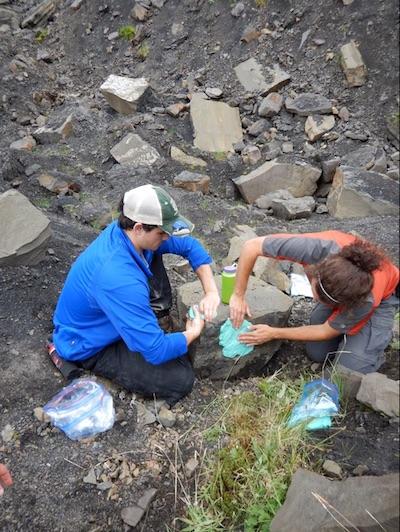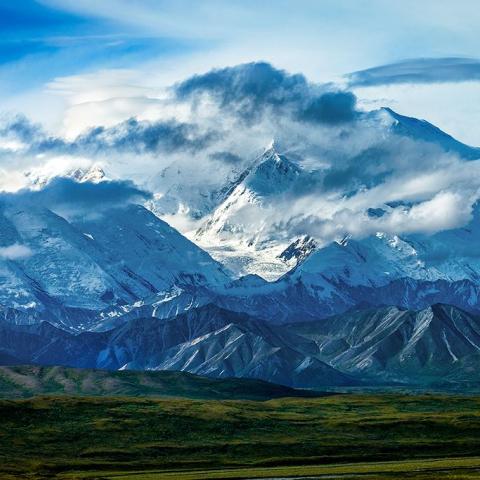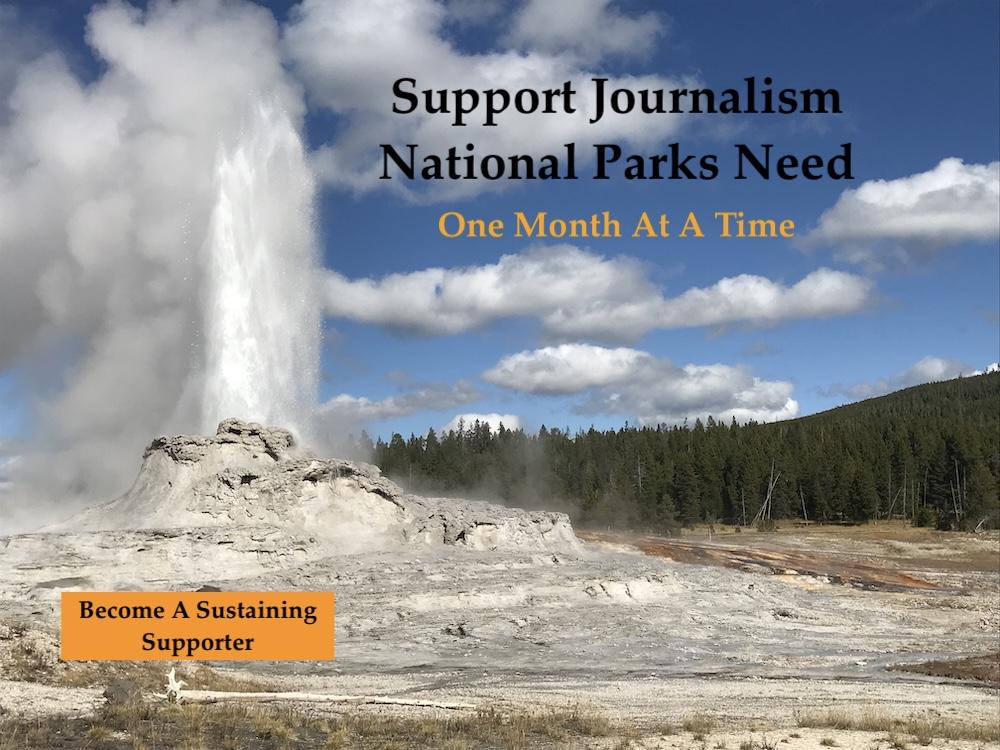
Close up image of an extremely well preserved meat-eating dinosaur footprint in Denali National Park. This track clearly shows the fleshy pads of skin in each toe, claw impressions and even a faint remnant of the actual pebbly skin texture./Pat Druckenmiller
A window into Denali National Park's paleontological past has been unearthed by researchers who found fossilized dinosaur bones and trackways in the park's backcountry.
Paleontologists from the University of Alaska Fairbanks and the National Park Service found the fossilized remains in July, and just announced the finds this week. Pat Druckenmiller, curator of earth sciences at the University of Alaska Museum of the North, is leading a collaborative project with Denali over the next several years to explore additional areas and make new discoveries.
“This marks the beginning of a multi-year project to locate, document and study dinosaur fossils in Denali National Park. This is a world-class site for tracks of dinosaurs and other animals that lived in Alaska during the Cretaceous Period. Now that we have found bones, we have another way to understand the dinosaurs that lived here 70 million years ago," he said in a park post on its Facebook page.
The research team found four different fragments, including one ossified tendon. The largest is a few inches long. They are clearly parts of bigger bones from a large animal, ruling out all other animals with a backbone known from this geological period, including mammals, birds and even flying reptiles, the release said. Because they are parts of much bigger bones, Druckenmiller said more complete remains may be found in the park.

Undergraduate paleontology students Thomas Sniezak (University of Alaska Fairbanks) and Nick Freymueller (University of New Mexico) apply a molding compound onto a dinosaur track. The mold, also known as a peel, produces a perfect copy of the original track and is much easier to carry out of the field./Pat Druckenmiller
“Finding these bones opens a new chapter in the story of Denali dinosaurs," he said. "That story is still being written as we find new sites, new kinds of dinosaurs and evidence of their behavior.”
Before 2005, there was no known dinosaur record in Denali. That year, the first track was discovered in the Cantwell Formation near Igloo Creek. Since then thousands of tracks have been catalogued, but this is the first time scientists have found identifiable bones left by animals that populated the area during the Late Cretaceous Period.
Park geologist Denny Capps said that while Denali National Park was created to protect the present intact ecosystem 99 years ago, it's now known that the park also protects an ancient ecosystem.
“Visitors could discover a fresh bear track next to a 70-million-year-old dinosaur track or potentially even a bone. Thankfully, these resources are protected within the Denali wilderness for all to enjoy,” he said.
Heather MacFarlane, a UA Museum of the North research assistant, discovered the first bone. She and other researchers recognized the fragments as bones rather than sedimentary material based on the surface and internal structure. These fossils closely resemble other plant-eating dinosaur bones found in Alaska.
Paleontologist Cassi Knight, physical science technician for Denali National Park, was with MacFarlane when the discovery was made. “It is significant because it answers a question that has been standing for the past 11 years, ‘Are there dinosaur bones preserved in the Cantwell Formation?’,” she said. “We have a great record of dinosaurs inhabiting this area and now we finally know that their bones are preserved, too.”
Gregory Erickson, a Florida State University researcher who specializes in the use of bone and tooth histology to interpret the paleobiology of dinosaurs, was also part of the discovery team. He is preparing microscopic thin sections of some of the fossils. These delicate slices can be examined under high-powered microscopes to determine the type of animal that left the bones behind. Age can also be revealed from annual growth lines and other patterns.
Based on the shape and microstructure of the fossilized tendon discovered by the team, Erickson and Druckenmiller have discovered that it is from a large ornithopod dinosaur, probably a hadrosaur. These duck-billed, herbivorous dinosaurs were probably the most abundant large animals in Alaska and the primary trackmakers in the park during this time period.
Another larger fragment is composed of spongy bone originating from the end of a large animal’s limb bone. This microstructure rules out any theory that the bone could have come from a crocodile or other slow-growing, cold-blooded animal. It is clearly from a moderate to large dinosaur, they said.
Druckenmiller and Erickson have previously published documentation suggesting that during this time period, a distinct, polar fauna existed in what is now Alaska. The Arctic was covered in a polar forest because the climate was much warmer. Since it was so far north, the dinosaurs had to contend with months of winter darkness and cooler temperatures than environments typically associated with dinosaurs.




 Support Essential Coverage of Essential Places
Support Essential Coverage of Essential Places






